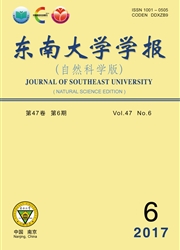

 中文摘要:
中文摘要:
为了研究烘焙温度和通风量对室内建材散发挥发性有机化合物(VOC)以及室内VOC浓度分布的影响,对现有的VOC散发和传递模型进行了改进.引入温度对建材中VOC的传质系数的影响,并采用文献中的实验数据验证了该模型的正确性.应用该模型计算了建材内部和室内空气中VOC浓度变化.结果表明,换气次数的提高能够加强空气中VOC的稀释,烘焙温度的升高能够加强材料内VOC的传质速率,使VOC向外扩散速率加快,降低建材中剩余VOC的含量,从根源上解决VOC的长期散发问题.从理论上提出和验证了间歇通风烘焙方法是有效降低室内VOC浓度的措施.
 英文摘要:
英文摘要:
A macro volatile organic compounds (VOC) emission and concentration prediction model, which considers the influence of ventilation rate and material temperature on VOC concentration distribution in materials and air, is proposed. The model was verified by the data in literatures. The influences of different parameters were also studied. The results show that high temperature can accelerate VOC emission from material to air through increasing diffusion coefficient, while high ventilation rate can decrease VOC concentration in air rapidly. High temperature and ventilation can accelerate VOC emission and reduce VOC concentration in air but it will increase energy consumption. Considering energy consumption, the bake out method coupled with intermittent ventilation is recommended in removing VOC according to our model.
 同期刊论文项目
同期刊论文项目
 同项目期刊论文
同项目期刊论文
 期刊信息
期刊信息
